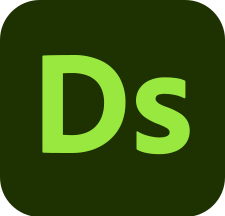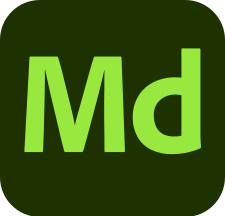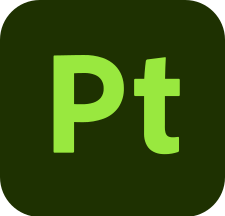What is Adobe Substance 3D?
Substance 3D is a suite of software tools developed by Adobe for creating and editing high-quality textures, materials, and 3D models used in various industries like gaming, animation, and design.
Substance 3D family apps like Substance 3D Modeler, Substance 3D Sampler, Substance 3D Designer, Substance 3D Painter, Substance 3D Stager and Substance 3D Assets, empowering artists and designers to craft realistic and detailed visual elements for their projects.
Adobe Substance 3D History
Adobe Substance 3D, previously known as Allegorithmic Substance, has transformed 3D content creation since its inception in 2003. Beginning with Substance Designer in 2007, it revolutionized procedural texture generation. Adobe’s acquisition of Allegorithmic in 2019 integrated Substance into Adobe’s suite, introducing tools like Substance Painter, Substance Alchemist (now Substance 3D Sampler), and Substance 3D Modeler (formerly Medium). This evolution has empowered designers, artists, and 3D professionals, reshaping industries by simplifying texture creation and enhancing realism in 3D design.

Adobe Substance 3DFamily ofApps
The Adobe Substance 3D Family of Apps offers a comprehensive suite of powerful tools for 3D content creation. Substance Painter allows intricate texture painting, while Substance Designer excels in procedural texture generation. Substance 3D Sampler (formerly Substance Alchemist) creates materials from real-world references. Substance 3D Modeler (formerly Medium) and Substance 3D Stager enhance modeling and scene composition. Substance 3D Assets (formerly Substance Source) provides a library of ready-made materials. Together, these apps cater to artists, designers, and 3D professionals, streamlining workflows and pushing the boundaries of realism in various industries like gaming, animation, and design.
- Substance 3D Modeler (formerly Medium):
- 3D sculpting and modeling tool.
- Designed for creating organic and hard-surface models.
- Originally developed for virtual reality sculpting.
- Integrated into Adobe’s Substance 3D suite.
 |
- Substance 3D Sampler (formerly Substance Alchemist):
- Material creation tool.
- Generate materials from photos or scans.
- Part of the Substance 3D suite.
- Supports realistic material design.
 |
- Substance Designer:
- Node-based procedural texture creation.
- Allows artists to generate complex materials.
- Used for creating textures and materials for 3D models.
- Part of the Substance 3D suite.
 |
- Substance Painter:
- Texture painting and material authoring.
- Ideal for creating PBR textures.
- Enhances realism in 3D models.
- Part of the Substance 3D suite.
 |
- Substance 3D Stager:
- Scene and environment creation.
- Visualize 3D scenes with realistic lighting and materials.
- Compose and render 3D environments.
- Part of the Substance 3D suite.
 |
- Substance 3D Assets (formerly Substance Source):
- Library of materials and assets.
- Offers a wide range of pre-made materials.
- Conveniently accessible for use in 3D projects.
- Part of the Substance 3D suite.
What For Adobe Substance 3D Family Apps?
The Adobe Substance 3D family of apps is a versatile suite of software tools designed to empower artists, designers, and 3D professionals in creating, refining, and enhancing 3D content. These applications serve various purposes and stages of the 3D content creation process, catering to industries like gaming, animation, visual effects, design, and more. Here’s a breakdown of what each app within the Substance 3D family offers:
- Substance Painter:
- Texture painting and material authoring.
- Realistic detailing and texturing of 3D models.
- Ideal for creating complex and high-quality textures for various surfaces.
- Substance Designer:
- Procedural texture generation through a node-based approach.
- Allows artists to create intricate, customizable textures algorithmically.
- Used to design and visualize complex materials for 3D models.
- Substance 3D Sampler (formerly Substance Alchemist):
- Material creation from photographs, scans, and real-world references.
- Enables artists to replicate real-life materials in their digital projects.
- Substance 3D Modeler (formerly Medium):
- Virtual reality sculpting and modeling tool.
- Facilitates both organic and hard-surface modeling.
- Enables artists to shape and refine 3D objects in a virtual environment.
- Substance 3D Stager:
- Scene composition and visualization.
- Realistic lighting, material application, and rendering for 3D scenes.
- Used to create compelling visual presentations and environments.
- Substance 3D Assets (formerly Substance Source):
- A library of pre-made materials, textures, and assets.
- Provides a collection of resources that artists can directly integrate into their projects.
Collectively, the Adobe Substance 3D family offers a comprehensive toolkit for creating and enhancing 3D content, from texture creation and material design to sculpting, modeling, scene composition, and asset integration. The suite’s integration and compatibility facilitate seamless workflows, helping creators achieve remarkable realism and visual quality in their 3D projects across diverse industries.
Who Uses Adobe Substance3D Family Apps?
The Adobe Substance 3D family of apps is embraced by a diverse community spanning gaming, animation, design, architecture, and education. Game developers rely on Substance Painter for detailed textures, while architects use Substance 3D Stager for realistic visualizations. Designers harness Substance Designer for intricate materials, educators teach with its tools, and artists in various fields sculpt and model using Substance 3D Modeler. Professionals across industries benefit from these apps, elevating their creative output with realistic 3D content and captivating visuals.
What Is Adobe Substance 3D Features?
The Adobe Substance 3D family of apps offers a wide range of features that empower artists, designers, and professionals to create and enhance realistic 3D content. While my information is based on details available up until September 2021, here’s an overview of some key features across the Substance 3D family apps:
Substance Painter:
– Intuitive texture painting and material authoring.
– Real-time PBR viewport for accurate visualization.
– Extensive library of brushes, masks, and smart materials.
– Particle brushes for dynamic effects.
– Support for dynamic strokes and real-time materials.
Substance Designer:
– Node-based procedural texture creation.
– Ability to create intricate, customizable materials.
– Extensive preset library for efficient material generation.
– Substance Effects for dynamic adjustments.
– Graph editor for precise control over textures.
Substance 3D Sampler (formerly Substance Alchemist):
– Material creation from photos, scans, and real-world references.
– Advanced AI algorithms for material generation.
– Parameter adjustments for fine-tuning materials.
– Seamless integration with other Substance apps.
Substance 3D Modeler (formerly Medium):
– Virtual reality sculpting and modeling.
– Tools for both organic and hard-surface modeling.
– Immersive creative environment using VR.
– Export capabilities for use in various projects.
Substance 3D Stager:
– Scene composition and environment creation.
– Realistic lighting and material application.
– Extensive library of assets for scene enhancement.
– Support for camera settings and animation.
Substance 3D Assets (formerly Substance Source):
– A comprehensive library of pre-made materials and textures.
– Assets for various themes and projects.
– Direct integration with other Substance apps.
– Simplifies the process of material selection and application.
These features collectively enable users to create high-quality, realistic 3D content, streamline workflows, and enhance the overall visual quality of their projects. Keep in mind that developments may have occurred since my last update, so I recommend visiting Adobe’s official website or documentation for the most up-to-date and detailed information about the features of each Substance 3D family app.
Here Are Some of The Most Common Tools Group
The Adobe Substance 3D family of apps consists of various tools and functionalities grouped into categories that are commonly used across the suite. While my information is based on details available up until September 2021, here are some of the most common tool’s groups found in Substance 3D family apps:
1. Texture Creation and Painting:
Substance Painter: Offers an array of brushes, masks, and painting tools for creating and detailing textures directly onto 3D models in a real-time PBR viewport.
2. Procedural Material Generation:
Substance Designer: Employs a node-based system to create intricate procedural textures and materials, allowing users to design patterns and effects algorithmically.
3. Material Authoring and Manipulation:
Substance 3D Sampler (formerly Substance Alchemist): Provides tools to create materials from photographs, scans, or real-world references, enabling users to manipulate and fine-tune materials.
4. 3D Sculpting and Modeling:
Substance 3D Modeler (formerly Medium): Offers tools for sculpting and modeling 3D objects, supporting both organic and hard-surface forms and often used in virtual reality.
5. Scene Composition and Visualization:
Substance 3D Stager: Facilitates the creation and arrangement of 3D scenes, enabling realistic lighting, camera settings, and animation for visualizations.
6. Material Library and Assets:
Substance 3D Assets (formerly Substance Source): Provides a library of pre-made materials, textures, and assets that can be easily integrated into various projects.
These common tool groups cater to the different stages of 3D content creation, including texture creation, material design, sculpting, modeling, scene composition, and asset integration. While these categories provide a general overview, each app in the Substance 3D family offers a wide range of specialized tools and features to cater to specific creative needs within these domains. For the most up-to-date and detailed information, I recommend referring to Adobe’s official documentation or resources related to Substance 3D apps.
What Are the Benefits of Using Substance 3D?
The Adobe Substance 3D family of apps offers a multitude of benefits for artists, designers, and professionals involved in 3D content creation and visualization. While my information is based on details available up until September 2021, here are some of the top benefits of using Substance 3D family apps:
1. Realism and Quality: Substance 3D apps enable the creation of highly realistic textures, materials, and scenes, enhancing the overall visual quality of 3D content.
2. Efficiency and Workflow: Procedural workflows in apps like Substance Designer allow for faster material generation, and intuitive tools streamline the creation process, increasing efficiency.
3. Flexibility and Customization: The suite empowers users to customize textures and materials extensively, enabling the creation of unique and intricate designs.
4. Integration: Substance 3D apps are designed to work seamlessly together, enabling a cohesive and integrated workflow for texture painting, material creation, sculpting, and more.
5. Real-Time Visualization: Real-time preview and viewport rendering in apps like Substance Painter provide instant feedback, aiding in accurate texture application and adjustments.
6. Library of Assets: Substance 3D Assets offers a library of ready-made materials, saving time and effort in material selection and application.
7. Virtual Reality Sculpting: Substance 3D Modeler (formerly Medium) allows for immersive 3D sculpting and modeling in virtual reality, providing a unique and intuitive creative experience.
8. Diverse Applications: The apps cater to a range of industries, from gaming and animation to product design and architectural visualization, offering versatility in application.
9. Educational Value: Substance 3D family apps are valuable tools for teaching and learning 3D content creation, benefiting educators and students alike.
10. Professional Presentation: Substance 3D Stager enables the composition and rendering of scenes with realistic lighting and materials, ideal for professional presentations and visualizations.
11. Industry Standard: The Substance suite has gained recognition as an industry-standard toolset, providing access to a community of professionals and resources.
12. Continuous Development: Adobe’s ongoing development and updates ensure that the Substance 3D family remains at the forefront of 3D content creation technology.
These benefits collectively empower users to create captivating, high-quality 3D content, streamline workflows, and bring their creative visions to life in various industries. For the most up-to-date and detailed information about the benefits of using Substance 3D family apps, I recommend checking Adobe’s official documentation and resources.
To Download & Install Adobe Substance 3D
It’s too easy to installing Adobe Substance 3D for the first time in any device you just have to go Adobe website (https://www.adobe.com) and search for Adobe Substance 3DCollectionthen download (https://www.adobe.com/products/substance3d-modeler.html)Substance 3DCollection. Then it will download Adobe Creative Cloud installer after installing it is will ask you to login or create an Adobe account if you already have an account then login or create an account then login. After that you can start 7 days free trial or get the Adobe subscription (Adobe Substance 3D Collection – US $49.99/mo. – Get Adobe Substance 3D Family Apps on desktop as part of Creative Cloud. There are many ways to purchase the subscription.After selecting your relevant subscription, you are ready to use Adobe Substance 3D.




